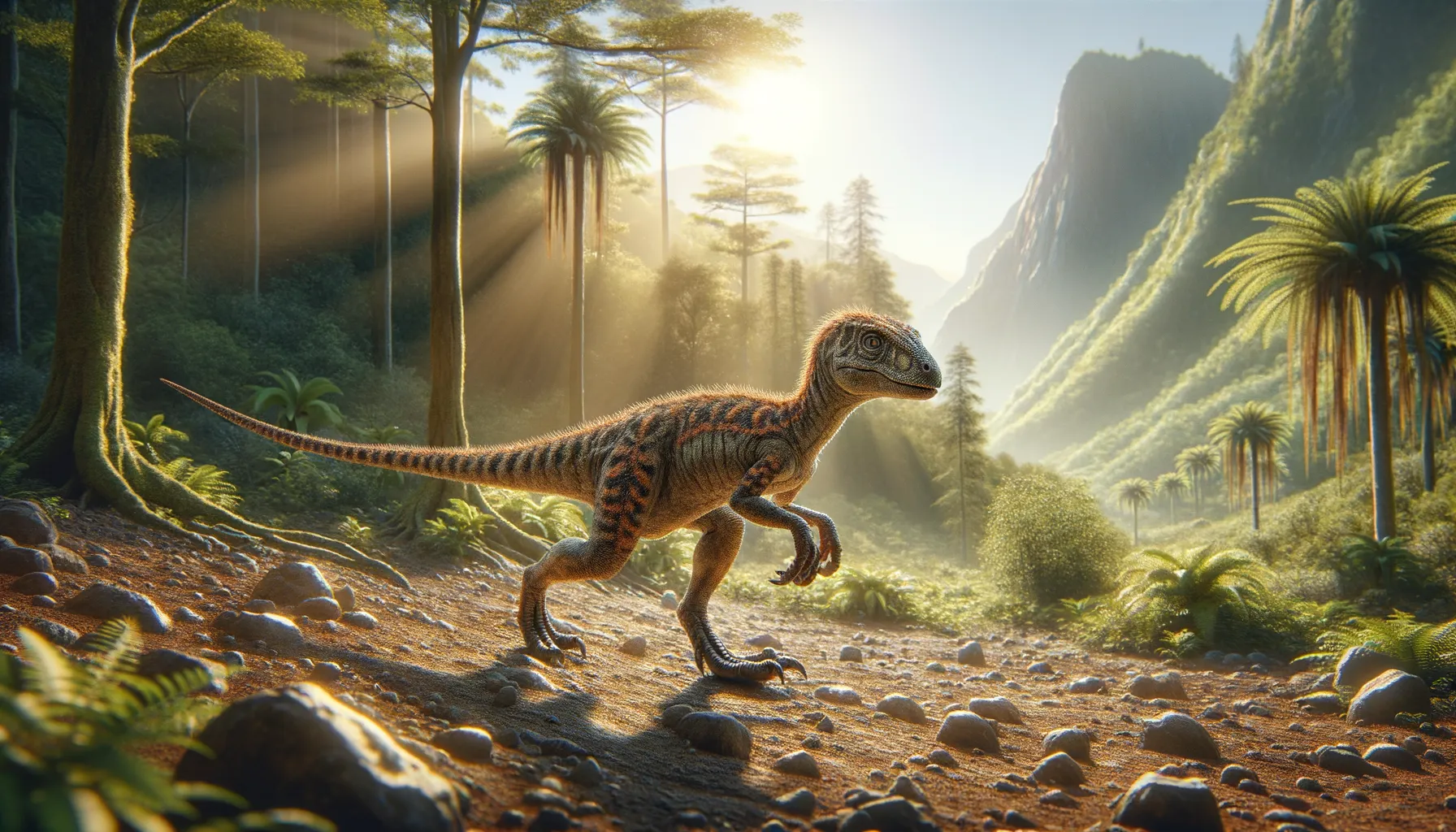
Marasuchus
Precursor to the rise of the dinosaurs!
Period
Triassic
Length
About 1 meter in total length.
Height
Around 20-30 cm tall at the hips.
Weight
Approximately 2-5 kg, similar to a small cat.
Marasuchus was a small, agile dinosaur-like reptile that lived during the Triassic period. It was part of the lineage that gave rise to true dinosaurs, making it crucial in understanding dinosaur evolution. Known for its slender body and long legs, Marasuchus was likely capable of quick, nimble movements, assisting it in escaping predators and possibly in finding food sources scattered around its environment.
Diet
Marasuchus was a carnivore, feeding primarily on small insects and other tiny vertebrates. It would have relied on its speed and agility to catch quick-moving prey, making it a proficient hunter in its ecosystem.
Hunting
Marasuchus likely employed its agility for hunting, using sudden bursts of speed to capture unsuspecting prey. It may have relied on keen senses to locate its meals, stalking small animals and insects with precision.
Environmental challenges
During the Triassic period, environmental changes were frequent, challenging smaller creatures like Marasuchus to adapt. Fluctuating climates and the presence of larger predators necessitated swift adaptations. They had to cope with both the drying of habitats and the competition for resources amidst growing biodiversity. This ability to adapt to varied and often harsh conditions played a critical role in its survival.
Speed
Quick on its feet due to its lightweight body.
Lifespan
Likely lived for several years attaining maturity quickly.
First discovery
First identified in Argentina in the late 20th century.
Fun Facts
- Marasuchus lived about 235 million years ago during the Triassic period.
- It was a small dinosaur-like creature, about the size of a cat, making it quite different from the gigantic dinosaurs we often imagine.
- Marasuchus is not considered a true dinosaur but is closely related, offering clues about the early stages of dinosaur evolution.
- It was bipedal, meaning it walked on two legs, which is a trait seen in many later dinosaurs.
- Fossils of Marasuchus have been discovered in Argentina, highlighting the diverse prehistoric life in South America.
- Marasuchus had a lightweight skeleton, which helped it move quickly, possibly to escape predators or catch prey.
- This creature's discovery helped scientists better understand the transition from early dinosaur relatives to the dinosaurs themselves.
Growth and Development
Marasuchus likely grew quickly to reach maturity, needing to evade predators and secure its diet rapidly. Its development may have included physical changes that enhanced its survival, like the strengthening of its limbs for better mobility. Fossil evidence suggests that it underwent rapid growth spurts, aiding its quick transition from juvenile to adulthood.
Habitat
Marasuchus inhabited semi-arid environments with scattered vegetation and water sources. The landscape included sparse forests and open plains, providing both shelter and hunting grounds. Its habitat required adaptability to varying conditions, supporting its need to find scarce food resources and avoid predators.
Interaction with other species
Interaction with contemporaneous species was likely common, involving both competition and predation. Marasuchus had to navigate a landscape with larger carnivorous threats. It might have competed with similar small reptiles and early mammals for resources, while also forming part of the prey base for larger predators.
Natural lifespan
Marasuchus had a natural lifespan similar to small modern reptiles.
Reproduction
Marasuchus likely reproduced oviparously, laying eggs in safe and concealed areas. Its reproductive strategy was probably focused on producing several offspring to increase the chances of survival. Little parental care might have been present, urging juveniles to be independent early.
Social behaviour
Marasuchus might have exhibited solitary behavior, especially during hunting activities. However, group interactions for protection or during mating seasons can't be ruled out. Social dynamics were likely influenced by environmental stresses and competition.
Fossil locations
Fossils of Marasuchus have been primarily discovered in Argentina. These locations provide vital insights into the environment of the Triassic period. The sites are crucial for understanding its place in the lineage leading to true dinosaurs.
